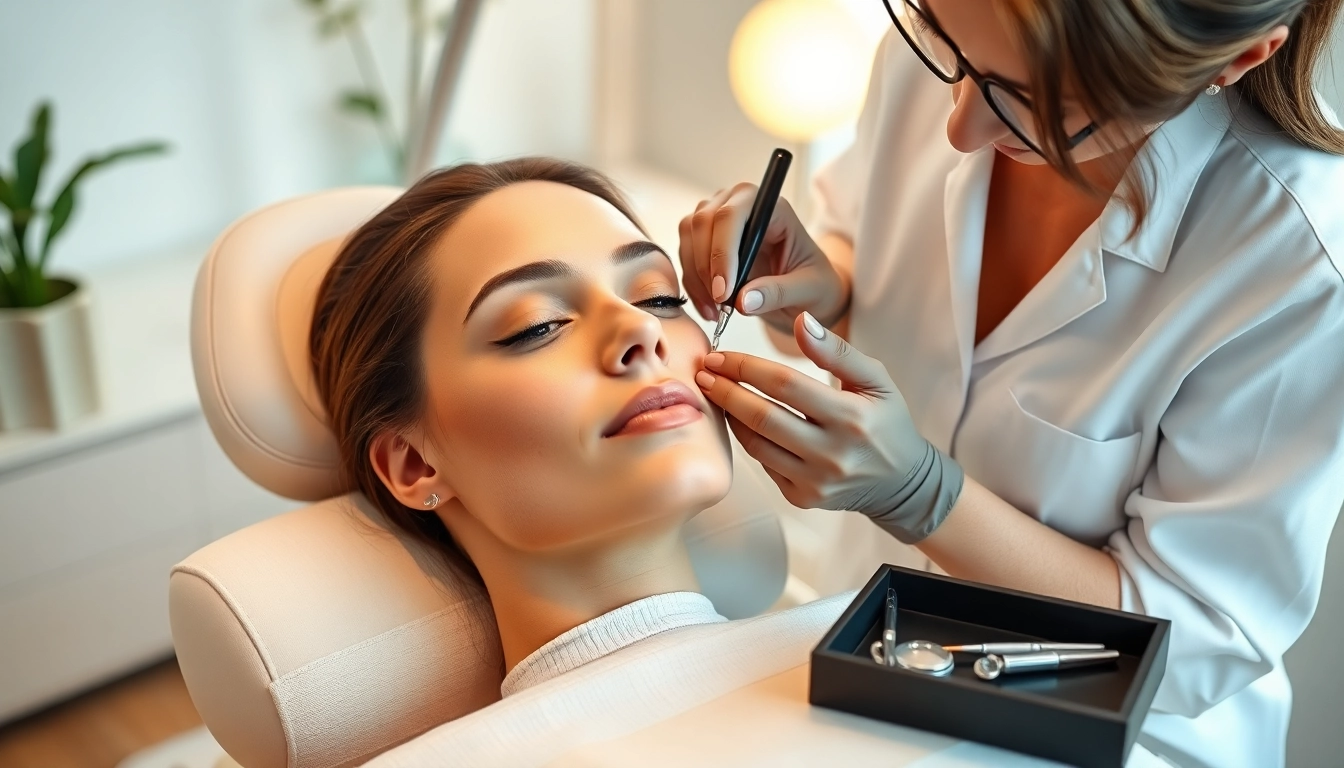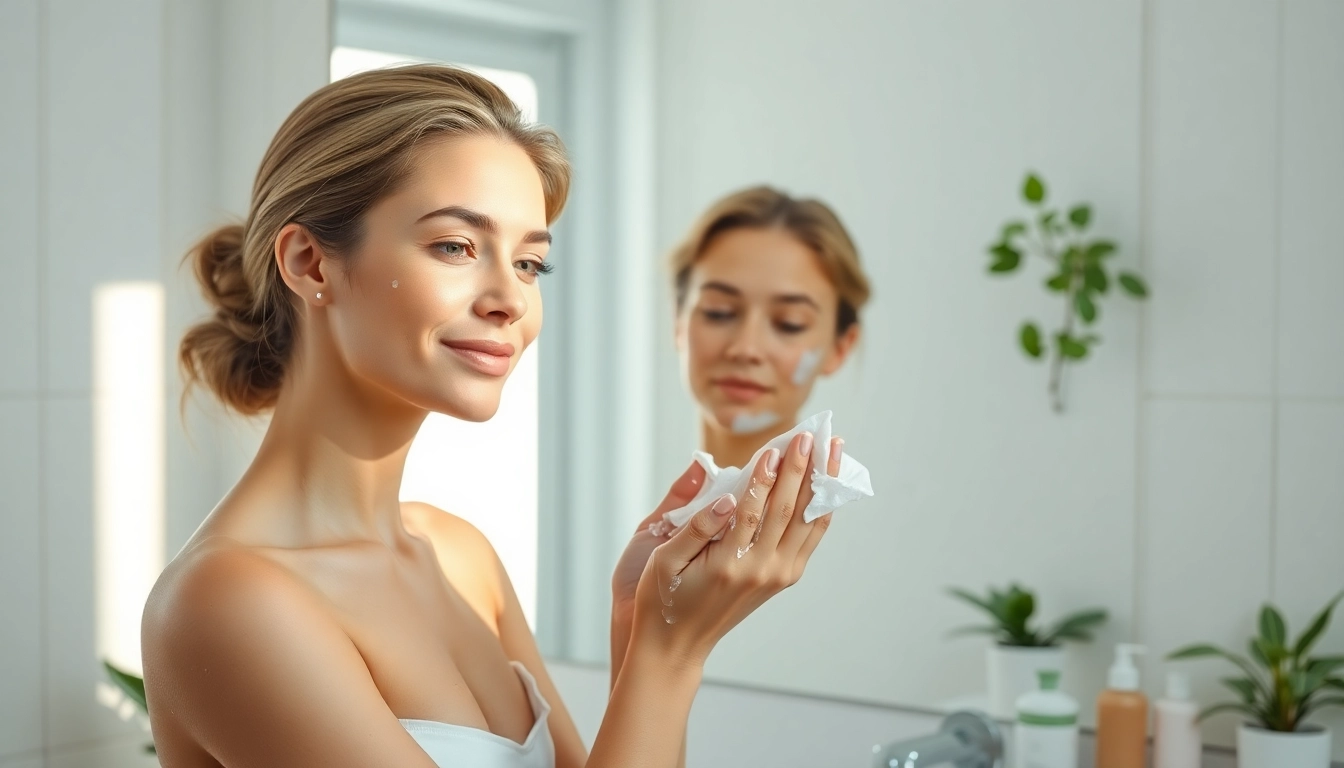Understanding Face Balancing Fillers
What Are Face Balancing Fillers?
Face balancing fillers are a type of aesthetic treatment designed to enhance facial harmony by strategically adding volume to specific areas of the face. Unlike traditional fillers that may focus on one feature, such as lip augmentation or cheek enhancement, face balancing fillers aim to create a cohesive look that aligns all facial features. This approach is particularly beneficial for those who wish to improve asymmetry or achieve a more youthful appearance without altering their natural beauty significantly. By utilizing hyaluronic acid or other biocompatible substances, these fillers can contour and sculpt the face, yielding results that can enhance not just an individual’s features, but also their overall proportion.
Benefits of Using Face Balancing Fillers
The benefits of face balancing fillers are multifaceted, addressing both aesthetic desires and emotional well-being:
- Enhanced Symmetry: Many individuals experience natural asymmetry in their facial features. Face balancing fillers can effectively minimize these discrepancies, leading to a more symmetrical appearance.
- Natural-Looking Results: When administered by a skilled practitioner, fillers can produce subtle enhancements that look natural, avoiding the “overdone” look that some patients fear.
- Non-Surgical Solution: For those who want to avoid invasive surgical procedures, fillers offer a non-surgical alternative that typically involves minimal downtime.
- Immediate Results: One of the most appealing aspects of fillers is the immediate effect they provide, allowing individuals to see changes right after treatment.
- Reversible and Adjustable: Unlike permanent implants, fillers can be adjusted or dissolved if the desired results are not achieved, providing flexibility in aesthetic choices.
Key Ingredients in Fillers That Balance Facial Features
The success of face balancing fillers largely hinges on the ingredients used. Here are some key components that can contribute to their effectiveness:
- Hyaluronic Acid: This naturally occurring substance in the body is renowned for its ability to retain moisture, making it an excellent choice for restoring volume and hydration.
- Calcium Hydroxylapatite: Found in bones, this ingredient is used in some fillers to add volume while stimulating collagen production, yielding longer-lasting results.
- Poly-L-lactic Acid: Often used in longer-lasting fillers, this ingredient helps stimulate collagen development over time, promoting gradual and natural-looking enhancements.
Finding Face Balancing Fillers Near Me
How to Search for Local Aesthetic Professionals
When looking for face balancing fillers in your area, it’s crucial to conduct thorough research to find qualified aesthetic professionals. Begin by searching online using the terms “face balancing fillers near me” or similar keywords. Utilize local directories, social media platforms, and professional associations to find reputable clinics. It’s helpful to make a list of potential providers and explore their websites to gather information about their services, treatment offerings, and practitioner credentials.
Evaluating Clinic Credentials and Reviews
Once you have a shortlist of clinics, evaluating their credentials and patient reviews is essential. Look for qualified practitioners who are board-certified dermatologists or plastic surgeons with specialized training in aesthetic injectables. Additionally, read patient testimonials and reviews on platforms such as RealSelf and Google to gauge satisfaction levels. Be vigilant about red flags, such as poor reviews that mention undesirable outcomes or unprofessional behavior.
Questions to Ask During Consultations
During your consultation, it’s important to ask detailed questions to ensure you’re fully informed about the procedure and the practitioner’s qualifications. Consider asking:
- What is your experience with face balancing fillers?
- Can you show before-and-after photos of previous patients?
- What products do you use and why?
- What complications have you encountered, and how were they addressed?
- What should I expect during the recovery process?
By asking these questions, you can assess the practitioner’s expertise, the safety of the procedure, and the likelihood of satisfactory outcomes.
The Procedure: What to Expect
Before the Treatment: Preparation Tips
Preparation for face balancing fillers helps ensure a smooth and successful treatment experience. Here are some tips to consider:
- Consultation: Prior to your appointment, ensure that you have a thorough consultation to discuss your goals and expectations.
- Avoid Blood Thinners: For at least a week before your treatment, avoid substances like aspirin, ibuprofen, or alcohol, which can increase the risk of bruising and swelling.
- Stay Hydrated: Drink plenty of water in the days leading up to your procedure, as hydration can enhance skin elasticity and overall results.
During the Procedure: Step-by-Step Overview
The procedure for administering face balancing fillers usually follows these steps:
- Consultation and Planning: The practitioner will discuss the areas to target and the desired outcome, mapping out a plan for injection.
- Cleanse and Numb: The treatment area is cleansed thoroughly, and a topical numbing agent may be applied to enhance comfort.
- Injection: Using a fine needle or cannula, the filler is injected at precise locations to achieve the desired contour and volume.
- Massage: The practitioner may gently massage the area to ensure even distribution of the filler.
Post-Treatment Care and Recovery
Post-treatment care is crucial to ensuring optimal results and minimizing side effects. Patients are typically advised to:
- Avoid vigorous exercise and excessive sun exposure for at least 24-48 hours.
- Refrain from touching or massaging the treated area for a few days.
- Follow any specific instructions provided by the practitioner regarding icing or medication.
Most patients can return to normal activities shortly after the procedure, although minor swelling and bruising may occur.
Common Concerns and Myths About Fillers
Addressing Pain and Recovery Myths
Many people may hesitate to pursue fillers due to concerns about pain and recovery. However, in reality, most patients report minimal discomfort during the procedure, largely due to the use of topical anesthetics. Recovery time is also typically swift, with many clients resuming their daily activities within a day or two. Understanding these realities can ease anxiety and provide reassurance for those considering treatment.
Understanding Potential Risks and Side Effects
While face balancing fillers are generally safe, potential risks and side effects exist. These can include:
- Bruising and swelling at injection sites
- Allergic reactions to filler components
- Asymmetry or uneven results if not properly administered
- Rare complications like vascular occlusion or skin necrosis
It’s vital for patients to discuss all potential risks with their practitioner during the consultation to make an informed decision.
Dispelling Myths: Longevity and Results of Fillers
Another common misconception is that fillers last indefinitely. In actuality, the longevity of results depends on several factors including the type of filler used, the area treated, and an individual’s metabolism. Typically, results from hyaluronic acid fillers can last anywhere from six months to a year, while more advanced fillers like poly-L-lactic acid may provide results lasting up to two years. Patients should have realistic expectations about how long their enhancements will last and plan for maintenance treatments accordingly.
Maximizing Results from Face Balancing Fillers
Complementary Aesthetic Treatments
To maximize the effects of face balancing fillers, consider complementary treatments such as:
- Botulinum Toxin (Botox): Using Botox in conjunction can help soften lines and enhance facial contours without adding volume.
- Platelet-Rich Plasma (PRP): PRP treatments can improve skin texture and volume, working synergistically with fillers.
- Skincare Treatments: Regular facials, chemical peels, or microdermabrasion can maintain skin health and longevity of results.
Skincare Routines for Extended Results
A tailored skincare routine is essential for extending the longevity of your fillers. Focus on:
- Hydration: Use a moisturizer that contains hyaluronic acid to keep skin plump and hydrated.
- Sun Protection: Daily application of broad-spectrum sunscreen is crucial in preventing premature aging and maintaining results.
- Gentle Cleansing: Avoid harsh cleansers that can strip the skin, leading to dryness and diminished results.
When to Schedule Follow-Up Treatments
Scheduling follow-up treatments is critical for maintaining desired results. Generally, patients should plan to check in with their aesthetic professional every six months to a year, depending on the type of filler used and how quickly their body metabolizes the product. Additionally, these appointments serve as an opportunity for a reassessment of facial balance and any adjustments that may be necessary.




